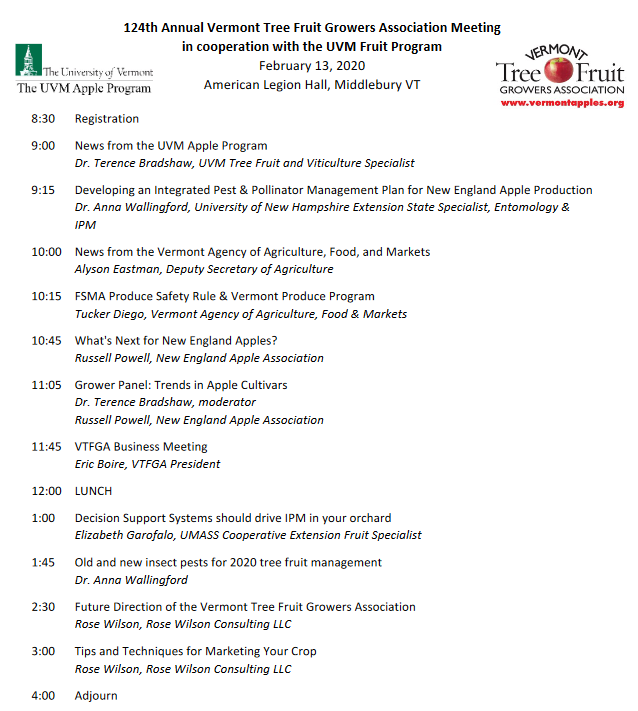For Immediate Release:
Vermont Agency of Agriculture, Food & Markets
Vermont Produce Safety Improvement Grant Applications Open November 1
Apply Now For Up to $7,000
November 1, 2019 | Montpelier, VT – The Vermont Agency of Agriculture, Food and Markets (VAAFM) is now accepting applications for the Vermont Produce Improvement Grant program. Produce Safety Improvement Grants (PSIG) can partially defray the costs of implementing on-farm food safety practices to help vegetable and fruit growers transition to compliance with the Food Safety Modernization Act (FSMA) Produce Safety Rule and/or meet market demands for on-farm food safety.
Awards will range from $2,000 to $7,000. PSIG funds can be used for any of the following, but are not limited to: harvest, wash, pack, and storage supplies; wash/pack area construction or renovation; monitoring/control devices; handwashing stations; cleaning/sanitization tools; health and hygiene signage; compost/manure handling improvements; and materials and systems to improve training and record-keeping.
“Vermont farmers are dedicated to quality and community,” remarks Agriculture Secretary Anson Tebbetts. “By investing in produce safety improvements, growers can improve operational efficiencies, reach new markets, and improve the quality of their end products.” These grants are important to Vermont’s efforts to support growers before and while the state regulates on-farm food safety under the federal food safety rule. “We are proud to support Vermont produce growers in obtaining essential infrastructure and training to reduce food safety risks and stay competitive in today’s market,” Tebbetts said.
Applicants must grow, harvest, pack, or hold “covered produce” as defined by the U.S. FSMA Produce Safety Rule and have average annual produce sales of greater than $27,528 over the past three years.1
How to Apply
• Mark your calendars! Grant applications will be accepted no later than Monday, December 9, 2019 at 11:59 pm.
• Visit agriculture.vermont.gov/ProduceSafetyGrants to download the FY2020 PSIG Request for Applications (RFA).
To date, the Vermont Produce Safety Improvement Grant program has awarded $204,000 in grants to 29 Vermont farms. All PSIG grantees have seen broad, positive impacts on their farms as a result of completing produce safety projects, such as increased efficiency, worker satisfaction, produce quality, or production capacity. Approximately $51,000, provided by the Vermont State Legislature, the USDA Specialty Crop Block Grant Program, and Castanea Foundation, is available for this fourth round of PSIG funding. With limited funding available, VAAFM prioritizes reaching as many produce farms as possible to support on-farm projects that minimize food safety risks. To that end, applications for this round of funding will not be accepted from farms that previously received a Produce Safety Improvement Grant.
Questions related to Produce Safety Improvement Grants or the FSMA Produce Safety Rule should be directed to Gina Clithero at (802) 585-6225 or AGR.FSMA.
1 The term covered produce includes any raw fruit or vegetable commonly consumed raw, as defined by the FDA. More information can be found in the FY2020 PSIG RFA, located at agriculture.vermont.gov/ProduceSafetyGrants.
Contact:
Gina Clithero
Produce Program | Vermont Agency of Agriculture, Food, & Markets
(802) 585-6225 | gina.clithero
###
Scott Waterman
Policy and Communications Director | VT Agency of Agriculture, Food & Markets
802-622-4662 | scott.waterman
Find us on social media: ![image001-gif]()
![image002-png]()
![image003-jpg]()
Please complete this brief survey to help us improve our customer service. Thank you for your feedback!





